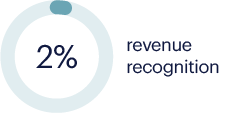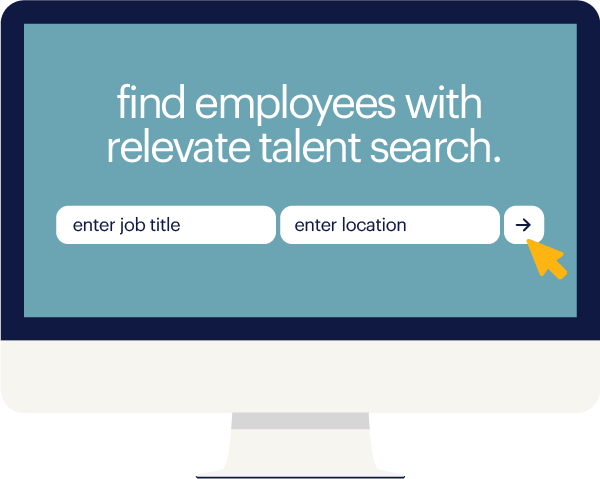Fears of a recession loom large, and a recent government shutdown left some businesses reeling — but you'd never know that by talking to business leaders in finance and accounting and human resources. In fact, when Randstad surveyed select clients in Q4 of 2018, we found an almost unanimously sunny business outlook for the year ahead. But that doesn't mean storm clouds won't be gathering on the horizon in the months to come.
Our survey uncovered some surprising business challenges, pain points and priorities. Here's the big picture:
-
The majority of organizations are at least somewhat optimistic about business growth and economic conditions.
-
Most plan to hire in the year ahead, but attracting and retaining talent is still a major challenge.
-
Many companies lack a clear picture of the skills they currently have and the skills they'll need down the line. That makes hiring a moving target — and a sizable skills gap among available talent only magnifies the challenge.
These are just a few of the eye-opening takeaways from our survey. We'll unpack these and more below.
high hopes and hiring woes
Ninety percent of respondents told us they were at least moderately optimistic about current economic conditions, and it's easy to see why. January 2019 marked 100 consecutive months of U.S. job growth, a powerful signal that business is booming across the board. It's also a sign that job seekers have the luxury of choice when considering job offers — meaning employers have to work harder than ever to attract the right talent.
This may sting finance and accounting and HR leaders more than they expect in the year to come. Some 70 percent said they expect business performance to increase in 2019, and 66 percent plan to hire. But those expectations may fall flat, given the realities of today's talent market.
In fact, our survey found that some organizations are already feeling the pinch. Here are the top internal challenges for finance and HR pros today, according to our survey:






As for external challenges, here's what our respondents said:






mind the skills gap
All told, these stats paint a troubling picture for business growth. The demand for skilled talent is high, and so is the bar for attracting it. Meanwhile, scaling effectively and forecasting customer demand go hand-in-hand, but neither can happen without the right people in place. But what skills are the right skills? What skills do today's companies currently have — and which ones will they need for tomorrow?
For most organizations, the answer to those questions seems to be: "We don't know." Some 69 percent said they haven’t performed a skills gap analysis to understand what skills existing staff members have and which ones they’ll need for the future. Another 54 percent don't have succession plans in place for top performers. When you factor in the two to three months it takes 53 percent of respondents to fill a direct-hire role, it becomes clear that many businesses may be just two-weeks notice away from a full-blown talent crisis.
Little wonder, then, that leading companies are investing heavily in upskilling and reskilling initiatives. A McKinsey survey of global world leaders found that "addressing potential skills gaps related to automation/digitization" was a top priority for 66 percent of respondents, and companies like Boeing are pouring as much as $100 million into upskilling initiatives around the country.
But that same McKinsey report found that 35 percent of U.S. leaders believe they can overcome the skills gap by hiring new, more skilled employees. Yet, in a labor marketplace where top talent is gone in as few as 10 days, those execs may want to rethink that position ASAP.
a bad hire hurts everyone
Speed may be critical to success in today's marketplace, but when organizations rush the hiring process just to get a body in a seat, they risk getting burned by a bad hire. In fact, our survey shows that a bad hire's impact goes beyond just the monetary cost of finding, replacing and onboarding his or her replacement.
When asked about the most detrimental impact of a bad hire, here's what our clients said:




While last year’s respondents were largely concerned about the cost of a bad hire, this year’s respondents cited time wasted on training as the worst outcome of a poor hiring choice, followed closely by the increased stress on the immediate team. This may mean that leaders are beginning to look past the short-term damage a bad hire does and finally seeing the bigger picture — namely, that lower morale, higher stress, poorer productivity and increased turnover are the real cost of a bad hire. It's not only about the immediate financial outlay, after all.
hiring isn't the only hurdle
You can't get rid of a bad hire fast enough, but how do you keep your best people from pursuing opportunities elsewhere? According to our survey, the bulk of companies believe the answer is “enhanced benefits,” like casual dress codes and employee discounts. "Competitive salaries,” meanwhile, came second — and that's going to be a problem.
That's because these stats demonstrate a sizable disconnect between what today's talent wants and what organizations think they want. Millennials are the largest generation in the U.S. labor force today, and studies show that perks and benefits aren't at the top of their list when evaluating potential employers. To make this disconnect even broader, 48 percent of respondents said their employer brand’s biggest differentiator was their company’s culture and reputation. Just 10 percent cited compensation, and only five percent listed opportunities for growth.
Company culture and great benefits may be vital components of successful retention strategies, but they aren't going to be make-or-break factors for top performers — whereas competitive pay and opportunities for growth absolutely will. To keep your best people, companies need to take a second look at their retention strategies and realign their offerings with what today's talent really wants.
conclusions and key takeaways
Business seems to be booming for the respondents to our survey, and that's great news. But to transform optimistic expectations into reality, businesses need to get real about today's talent marketplace. With more options than ever before, in-demand talent can afford to be choosy about the roles they take. Meanwhile, talent with today's hottest skills is getting scooped up in record time, leaving companies that have longer hiring processes competing for leftovers.
That's why companies need to gain clarity on the skills they have today, and the skills they'll need in the future. And they need to make some kind of investments to bridge that gap — whether that means training programs or hiring initiatives.
All in all, there's a lot to be done for businesses today in order to achieve their ambitious short- and long-term goals. That's where Randstad Professionals comes in. Our high-tech, high-touch approach to recruitment can help you avoid the pain of a bad hire and solve today's most complex workforce challenges. We have decades of expertise in finance and accounting and human resources, and our local consultants can deliver talent solutions tailored to your market and industry.
Get in touch with us today to learn how.
























